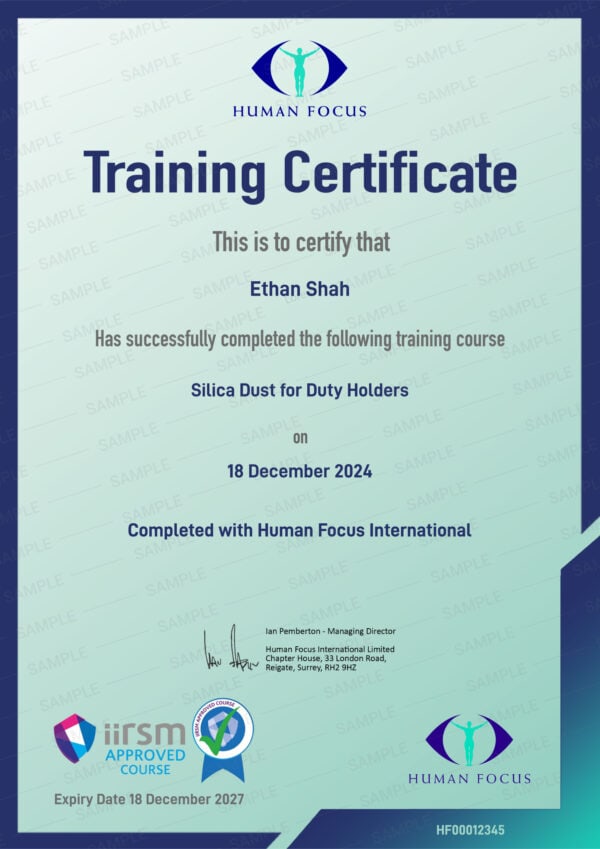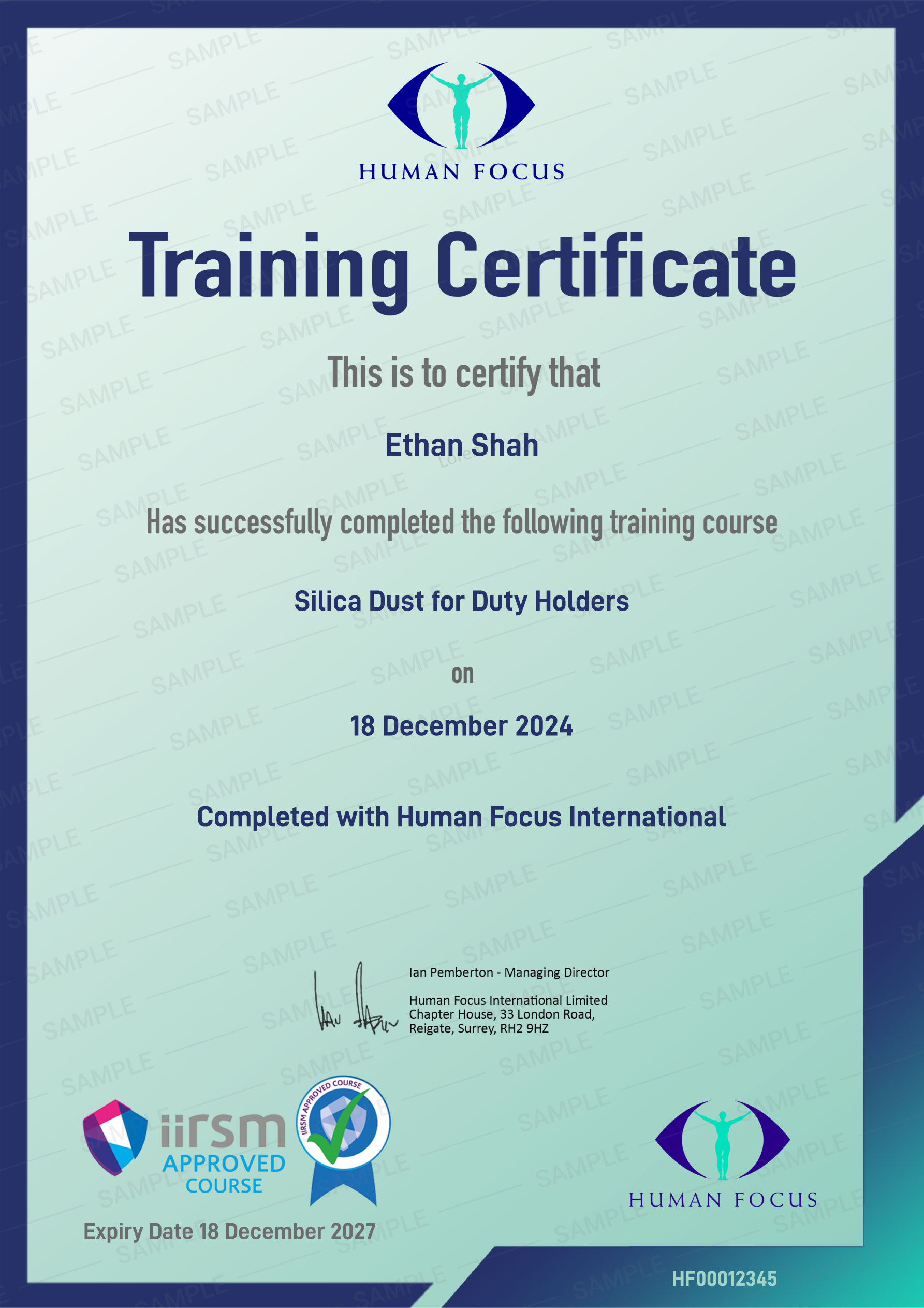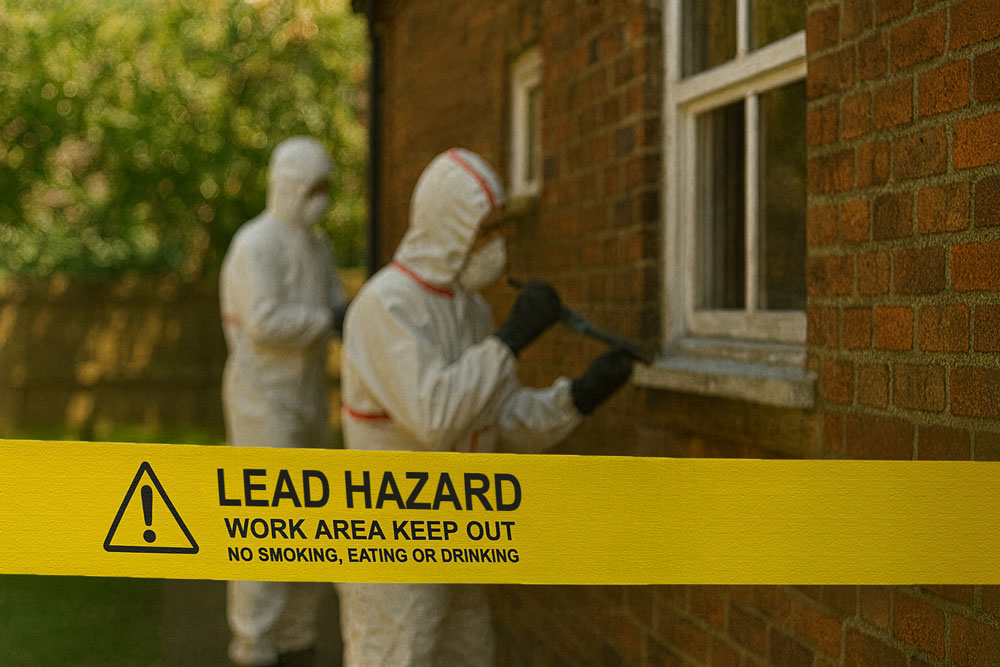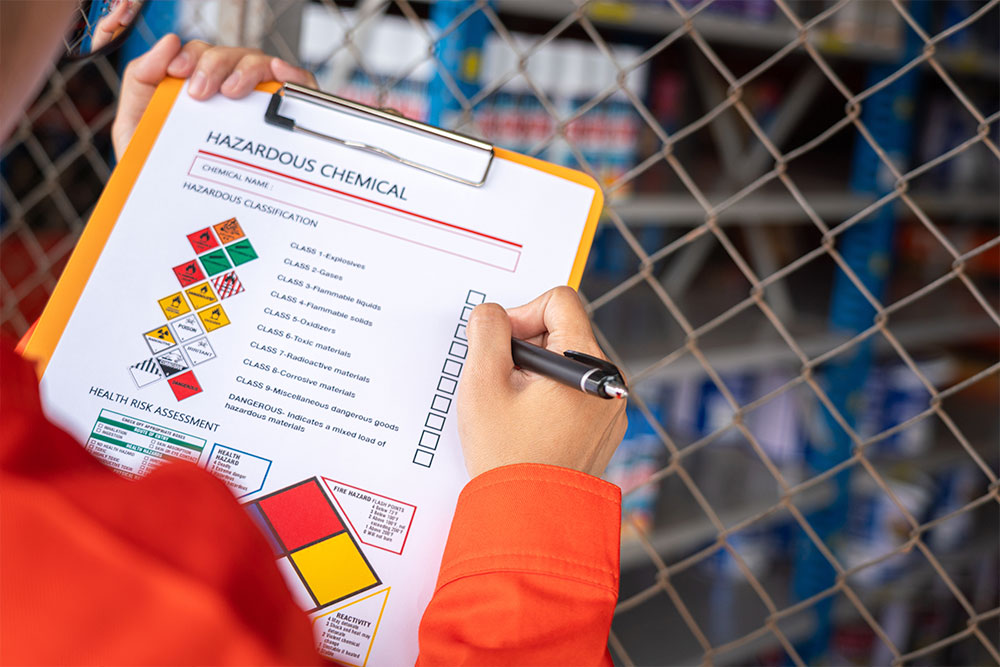Silica is the second-largest health and safety risk to construction workers after asbestos. Silica dust particles can be a hundred times smaller than a grain of sand, making them invisible to the naked eye. When inhaled, these microscopic particles can cause a range of severe conditions, including scarring, silicosis, chronic obstructive pulmonary disease (COPD) and cancer.
The Health and Safety Executive estimates long-term exposure to respirable crystalline silica (RCS) kills more than 500 construction workers each year.
To manage this threat, employers must keep RCS exposure levels within safe limits set by the Control of Substances Hazardous to Health Regulations 2002.
Our silica dust training course helps duty holders control the risk of silica exposure and comply with relevant legislation.
Are You Aware of Your Responsibilities?
Under the Health and Safety at Work etc. Act 1974, employers must prevent harm caused by work activities. This duty extends to protecting workers from exposure to silica dust.
Employers must also comply with the Management of Health and Safety at Work Regulations 1999, which require workplace risk assessments.
If silica dust risks are identified, employers must implement necessary control measures and provide adequate training per the Control of Substances Hazardous to Health (COSHH) Regulations and Construction Design and Management (CDM) Regulations 2015.
Failure to comply can compromise workers’ safety and lead to legal consequences, including fines, penalties and legal action.
Our course trains duty holders to conduct risk assessments and implement appropriate control measures to ensure a safe and compliant working environment.
About This Silica Dust Training Course
This three-module course explores legal duties and methods for preventing workplace exposure to respirable crystalline silica.
It provides comprehensive knowledge of silica dust and the associated health risks, as well as how duty holders can manage these risks using proven control measures.















